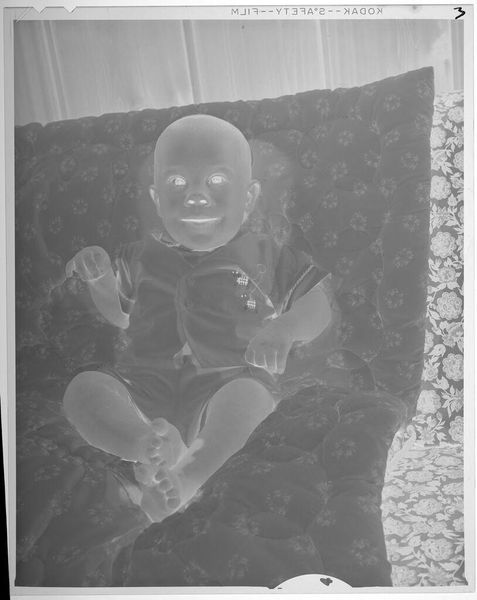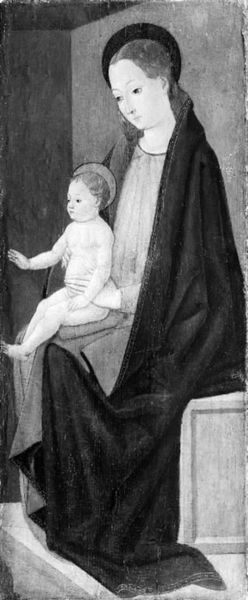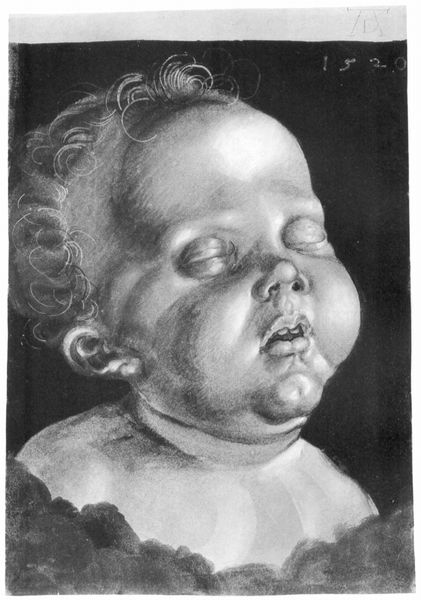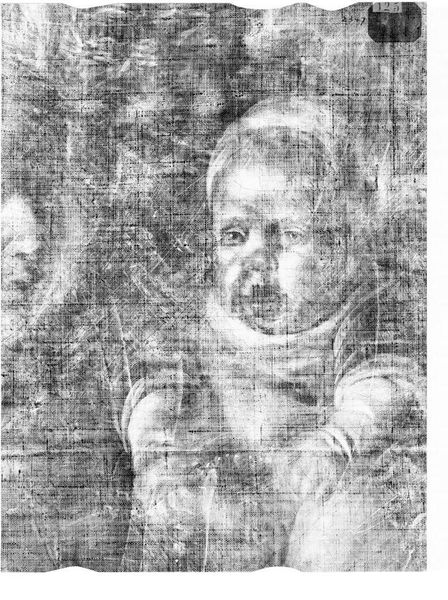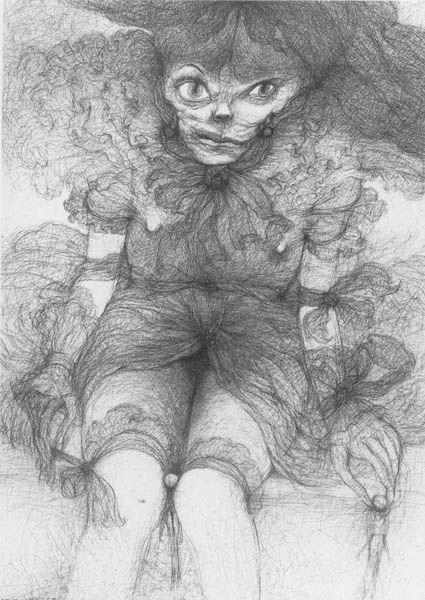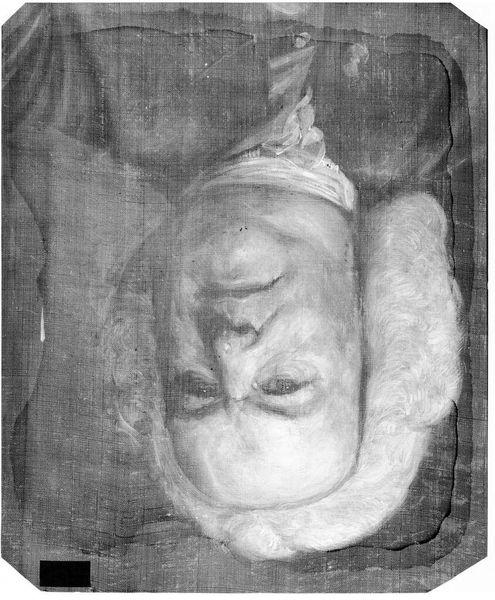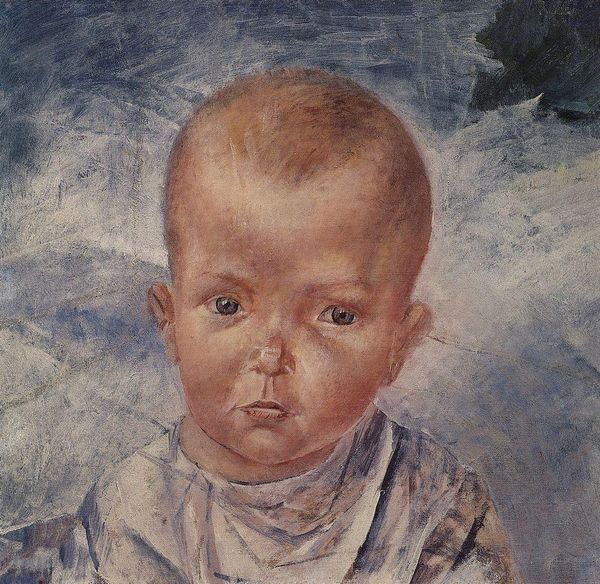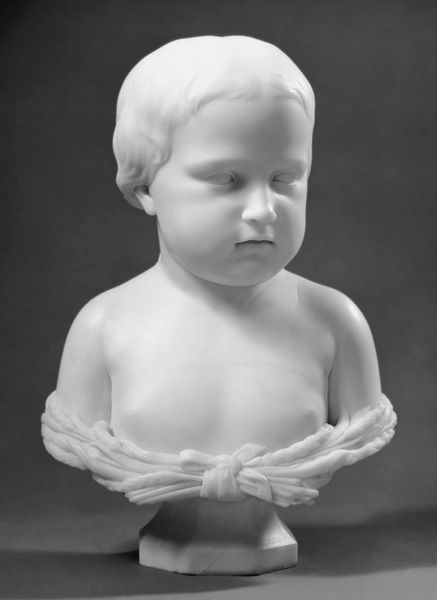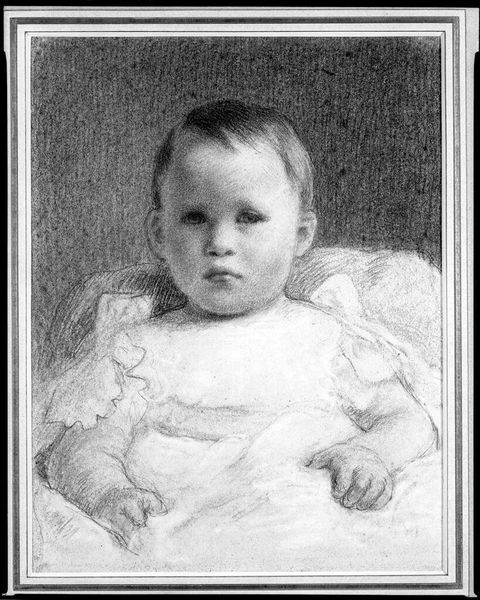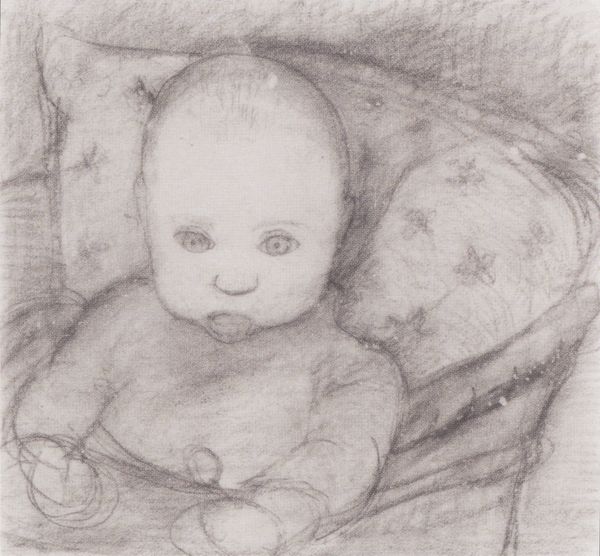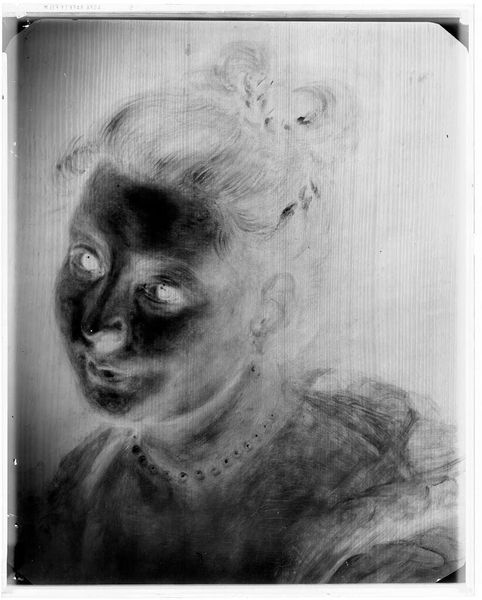
drawing, pencil
#
portrait
#
drawing
#
portrait
#
child
#
geometric
#
pencil
Copyright: M.C. Escher,Fair Use
Editor: This is M.C. Escher's "Infant Arthur," a pencil drawing from 1929. It's a strikingly detailed portrait. But the baby's expression is so solemn, almost unsettling. How do you interpret this work? Curator: That solemnity resonates deeply. A child, symbolically pure, yet rendered with such a knowing gaze. What enduring archetypes does infancy evoke for you – innocence? Potential? This is his son Arthur. Editor: Definitely potential. The lace and geometric shapes make me think of constraints too, like the baby is being restricted by those symbols. Curator: Yes, the tension between potential and constraint is palpable. Look closely at how the textures, created by stark hatching, define the infant's form against the plush pillows and blanket. Is Escher hinting at inherited constraints, societal or even existential, that shape us from our earliest moments? How might Arthur embody larger human anxieties? Editor: I hadn't considered the hatching technique as symbolic itself, but I can see how the sharp lines build that feeling. I was just so focused on the face. So that is Arthur, would Escher use his family frequently? Curator: More specifically, notice how those lines converge to form shapes both organic and geometric? Escher did drawings of his sons later in life. What impact might such symbolic representation, such an intense visual analysis, have had on Escher’s own experience of fatherhood? Editor: That's a powerful question, and it definitely casts a new light on the portrait. Curator: Indeed. It becomes a study of projection, perhaps, as much as a likeness of Arthur himself.
Comments
No comments
Be the first to comment and join the conversation on the ultimate creative platform.
